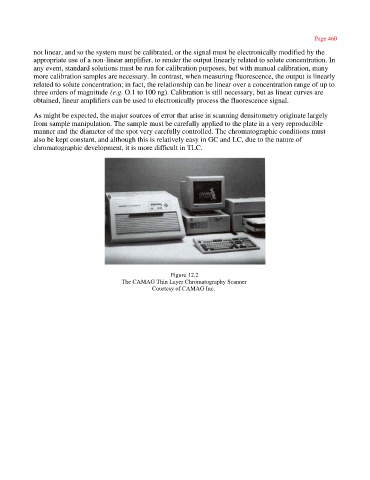Page 475 - Tandem Techniques
P. 475
Page 460
not linear, and so the system must be calibrated, or the signal must be electronically modified by the
appropriate use of a non-linear amplifier, to render the output linearly related to solute concentration. In
any event, standard solutions must be run for calibration purposes, but with manual calibration, many
more calibration samples are necessary. In contrast, when measuring fluorescence, the output is linearly
related to solute concentration; in fact, the relationship can be linear over a concentration range of up to
three orders of magnitude (e.g. O.1 to 100 ng). Calibration is still necessary, but as linear curves are
obtained, linear amplifiers can be used to electronically process the fluorescence signal.
As might be expected, the major sources of error that arise in scanning densitometry originate largely
from sample manipulation. The sample must be carefully applied to the plate in a very reproducible
manner and the diameter of the spot very carefully controlled. The chromatographic conditions must
also be kept constant, and although this is relatively easy in GC and LC, due to the nature of
chromatographic development, it is more difficult in TLC.
Figure 12.2
The CAMAG Thin Layer Chromatography Scanner
Courtesy of CAMAG Inc.

